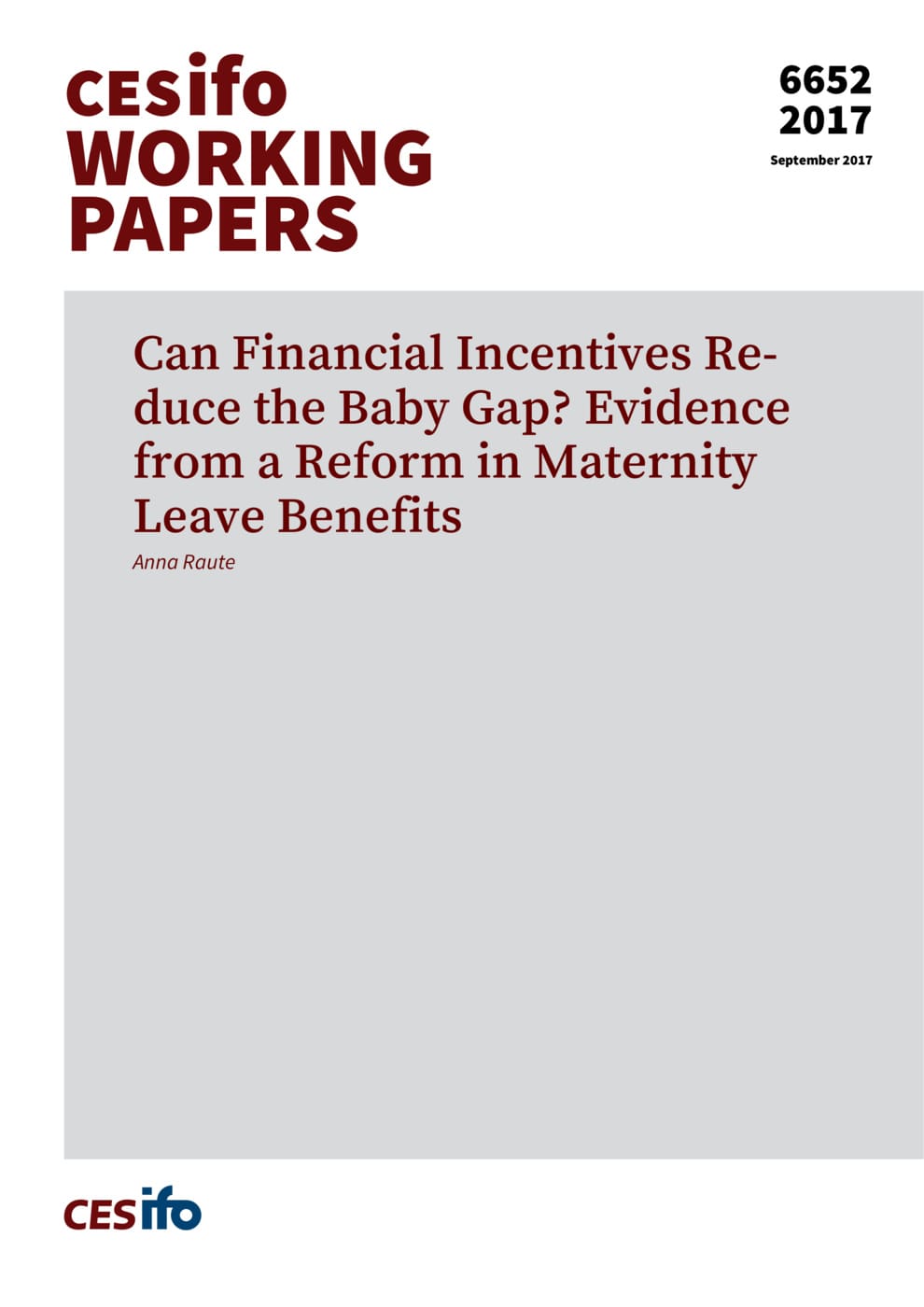Can Financial Incentives Reduce the Baby Gap? Evidence from a Reform in Maternity Leave Benefits
CESifo, Munich, 2017
CESifo Working Paper No. 6652

To assess whether earnings-dependent maternity leave positively impacts fertility and narrows the baby gap between high educated (high earning) and low educated (low earning) women, I exploit a major maternity leave benefit reform in Germany that considerably increases the financial incentives for higher educated and higher earning women to have a child. In particular, I use the large differential changes in maternity leave benefits across education and income groups to estimate the effects on fertility up to 5 years post reform. In addition to demonstrating an up to 22% increase in the fertility of tertiary educated versus low educated women, I find a positive, statistically significant effect of increased benefits on fertility, driven mainly by women at the middle and upper end of the education and income distributions. Overall, the results suggest that earnings-dependent maternity leave benefits, which compensate women commensurate with their opportunity cost of childbearing, could successfully reduce the fertility rate disparity related to mothers’ education and earnings.
Social Protection
Labour Markets